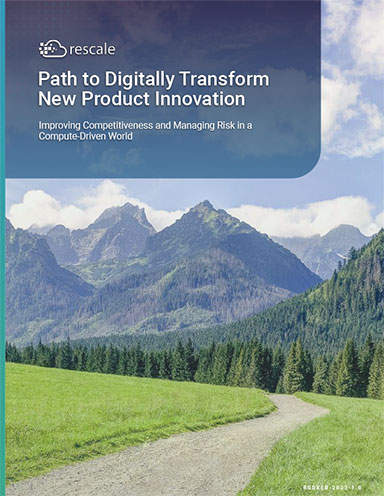Solve the Engineering Data Dilemma
Latest News
September 1, 2014
 Big Data has been both hailed as the currency of the Information Age and derided as overhyped. Both statements are true because data immediately loses much of its value if it cannot be properly analyzed and acted upon to help make decisions.
Big Data has been both hailed as the currency of the Information Age and derided as overhyped. Both statements are true because data immediately loses much of its value if it cannot be properly analyzed and acted upon to help make decisions.
Making use of data is getting more difficult as the amount of product information that needs to be shared explodes with increasingly complex products. At last month’s NIWeek in Austin, TX, National Instruments’ Executive Vice President of Global Sales and Marketing Eric Starkloff shared some sobering facts on our ability to generate data during a keynote address. He said by 2020 the Earth’s 8 billion people will generate 50 trillion gigabytes of data yearly. If that data was saved on the floppy disks that were ubiquitous in the 1990s, you could stack them to the sun and back 300 times, by Starkloff’s calculations.
That’s a lot of information to collect, much less process and use as a basis for decision making. Those difficulties lead to inaccuracies. Nate Silver, the journalist who used data to correctly predicted the results of the 2012 presidential elections in all 50 states, has been quoted as saying “the gap between what we know and what we think we know is widening,” partially because of a proliferation of inaccurate data forecasts.
Research firm Gartner recently analyzed its data to predict the death of Big Data as a term over the next two years.
Not to worry. A quick search of the Internet reveals that the term “Small Data” is gaining steam. Despite the birth of another soon-to-be overhyped term, this is actually a good sign. People are realizing that copious amounts of data aren’t useful to most people. What is needed to make decisions is the right data at the right time.
Buzzwords Build Upon Each Other
“The Cloud,” “Big Data” and “The Internet of Things” have been battling for attention. But they’re more than just hype; they’re actually working together to bring about what Joe Salvo, GE’s Director of Global Research, hailed as the “Systems Age” during his NIWeek presentation. The Internet of Things (see the August issue of Desktop Engineering), will consist of ubiquitous sensing technologies in all types of products that will be generating environmental and usage data. A large portion of that data will be saved and communicated via the cloud.
In the vision of the coming Systems Age, the cloud is what ties together all of the information needed to create the systems. But engineers need not wait to begin building their own systems to tie software, mechanical and electrical engineering disciplines together and collaborate with department decision makers up and down the supply chain. Software vendors are already using the cloud to allow any company, large or small, to collect, share and collaborate on engineering data.
Technology vs. Human Nature
Technology is rarely the weak link that causes data management implementations to fail. The “this is the way we’ve always done it crowd” is often responsible via small acts of civil disobedience: refusing to check in files, not working on shared drives, not annotating designs with information that is useful to other departments, and generally trying to maintain the status quo. The root cause of their attitude may have merit: A poorly implemented data management platform can easily cause more workflow headaches than it solves. That’s why it’s so important for design engineers to get involved in the process. Data management touches every aspect of a company, from the CEO to the guys delivering the finished product. Without a strong voice from the design engineering corner, it’s more likely that decisions will be made that will either hinder engineering’s workflow, tempt people to defy data management best practices, or both. But a reluctance to change isn’t the only roadblock to adopting a platform for systems engineering.
Data management, when implemented properly, is systemic. As such, it can be an expensive and grueling process to replace. Many companies feel locked into the data management systems they’re using, even if they know there are better solutions. Scalability is critical when adopting a new system. If your solution won’t scale to handle the influx of product information being shared, it’s better to make the change now instead of letting it drag your organization down.
The need for data management isn’t going away. With more simulation, larger models and the need for interdisciplinary and interdepartmental collaboration, it’s only going to increase in the coming “Systems Age.”
Subscribe to our FREE magazine, FREE email newsletters or both!
Latest News
About the Author
Jamie Gooch is the former editorial director of Digital Engineering.
Follow DE





